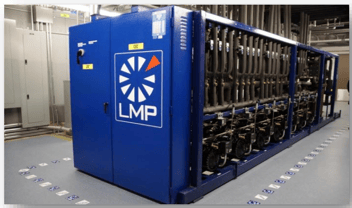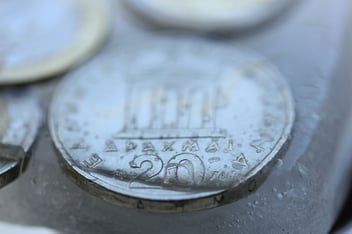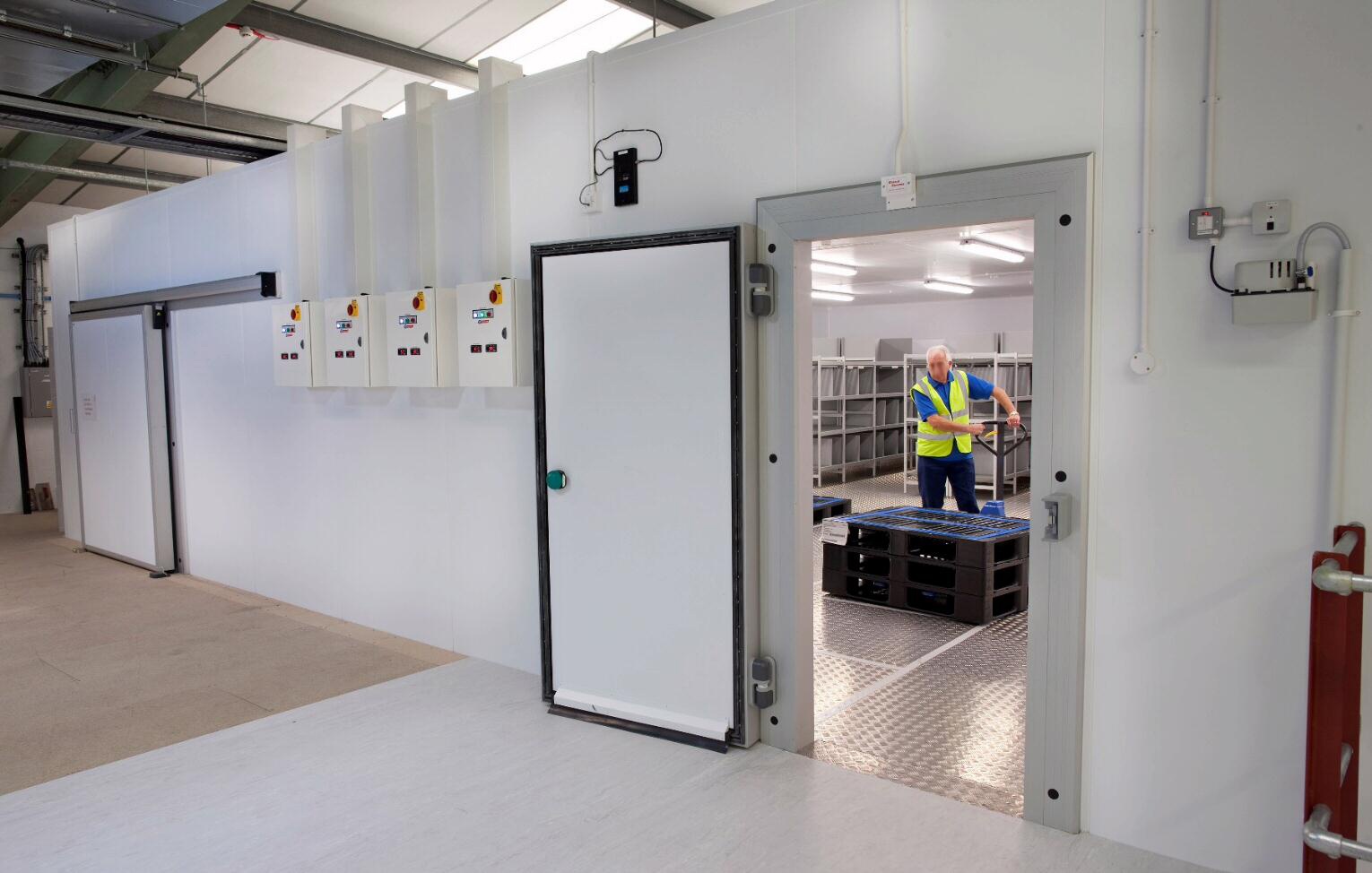When it comes to servicing a cooling room, the first step will always be a good design.
Preventive maintenance begins at the early stages of quoting, as a cooling chamber design can provide you with remarkable savings in the long run. Any extra costs or loses resulting from unforeseen events will be offset by raising the cooling equipment service life.
If your company invests, or is thinking about investing, in cooling chambers or rooms, good design, correct installation, and early servicing must be taken into account despite the likely challenges they can entail, as great benefits will surely come up from this, helping you grow and expand your client portfolio.
The following are some key points for cooling chamber design and maintenance:
#1 Time is money when it comes to cooling chamber design
An energy shortage or outage in cooling infrastructure suffices to cause food and meat deterioration, which can force products to either be sold at lower prices or even to be completely dismissed.
For instance, when manufacturing beverages, a glitch caused by poor cooling chamber design or maintenance can take a toll on sensitive processes like seeding, fermentation, and pasteurization, among others.
Keeping your cooling equipment in shape could make the difference when harmonizing product quality.
Cooling chamber design components
How can we tell apart good cooling chamber design? There are two essential components to it:
Cooling power: the cold to be output, or, in more industrial jargon, the heat to be taken out of the environment.
Energy required: defined by the produced power to reach the temperature wanted.
Efficient cooling room design must ensure the most cooling power at the least possible energy expenditure, all of which must agree with the preservation timing that is needed.
Another important factor to take into account when designing a cooling room in order to make sure product quality, and thus profitability, is temperature.
%2015.49.01.png?width=600&name=Captura%20de%20pantalla%202018-08-28%20a%20la(s)%2015.49.01.png)
#2 Watch for humidity inside cooling rooms
Humidity checkups are another rule of thumb when servicing cooling rooms. When water comes into contact with heat across the cooling infrastructure, humidity will be created. It is, however, a mistake to overlook such humidity as a normal thing in cooling rooms. These are actual data concerning the importance of humidity control:
- A high percentage of meat product deterioration are due to humidity and temperature conditions being poorly handled.
- A medical lab needs almost-flawless conditions to preserve extremely delicate material.
- Plenty of vaccines and drugs depend on humidity control at cooling rooms in order for their quality not to be compromised.
- Cooling chambers designed for restaurants or hotels are key, as their quality need to be constantly upkept.
- Cooling rooms for fruit and vegetable storage must ensure, to their best of its ability, aging process being put off, which can be harnessed by humidity.
- The presence of humidity within the system can be an indicator of larger leaks and problems in the compression system.
How can humidity issues be prevented in a cold room?
One of the main causes of production degradation is microorganisms. To prevent these from installing themselves, monthly cleaning with disinfectant and biological inhibiting agents is advised in all access areas, as well as in evaporators and condensers.
Make sure humidity does not put your products in harm's way.
#3 Reduce the chemical hazards to a minimum
With respect to industrial cooling, substance, gas or solution use entails high risks if done at poorly-designed cold rooms.
Chemical safety at cold rooms is a sanitary priority, and outlining stability regarding substance cooling, a delicate matter:
Most cooling chambers recirculate stale air, and so highly toxic chemical agents could lead to users' becoming exposed and sick.
Flammable solvent agents can create fires, as, oftentimes, rooms contain ignition sources.
Storing chemical agents inside cooling chambers comes with risks, as material with potential for flammable vapor release are being stored. It can also be the case that products are incorrectly sealed.
Poor cooling room design can lead to engine sparks and potential fires.
How are chemical risks prevented inside a cold room?
The cooling expert must evaluate the inner risks to cooling facilities in order to provide better safety in the face of hazardous material management.
Water quality inside the facilities using steam cooling is crucial, and so the right chemical treatment plan plays a key role.
Cleansing lines will ensure the correct temperature exchange between the environment and the cold room.
%2015.52.54.png?width=600&name=Captura%20de%20pantalla%202018-08-28%20a%20la(s)%2015.52.54.png)
#4 Avoid structural issues at the design stage
Rather than the creation of cold room design, and their implementation at a particular area, building a cooling facility must be but a part of a comprehensive project which ensures service life, and which reduces sanitary or safety risks.
Excess humidity, or spilled chemical agents, can cause oxidation, corrosion, and other structural issues which can negatively affect the integrity of cooling chambers.
This compromises their structure. Oftentimes, these problems are at the root of cold room design and can cause extra spending because of any unforeseen remediation.
For example, strong acids or bases can cause corrosion at the cooling coils installed in a cold room.
How to prevent damages in materials and components
A cold room can present device and electrical-grid malfunctions if not well tailored for the temperatures handled at the facility, or if their service life has expired.
To prevent any problems resulting in production and storage alterations, logs broken down by material specs based on item catalogs suggested by the project engineer are advised.
#5 Monthly pipeline and air-distribution system cleaning routines
It's very important to ask the product supplier about the safety diamond, making sure that disinfectant agents are compatible with construction materials to be used on walls, and on other mechanical components, such as fans.
A cold room can have many materials, such as copper, tin, and iron, and so corrosion must be observed.
As well, safety-and-security and biohazard practices need to be adopted because, then again, product quality must remain intact until their release into the market.
Monitoring the intake and exhaust flows across the cold room, as well as at the air inlets, will protect the product, lowering its degradation and preventing any unnecessary service expenses.
Preventive supervision and maintenance helps better the marketing chain efficiency, and the profitability, of your cold room.
In the long run, cold room design must reap benefits helping you surpass any growth expectations, and/or to reach better clients who trust your quality standards and product management of your cooling facilities.
Make sure to always have expert advisory within reach, as they will guide you about the gear you will need to achieve product quality storage, energy savings, and the in-force environmental regulations.
Related
Discover more related articles

4 key points in the transcritical co2 system
The design of a transcritical CO2 system is a challenge even for a refrigeration expert. The correct implementation and quality of the equipment...
Read more »
How to optimize costs in a CO2 cooling system
To successfully reduce costs in the implementation of a CO2 system, either with the intention of replacing an HFC system or for new installations,...
Read more »
